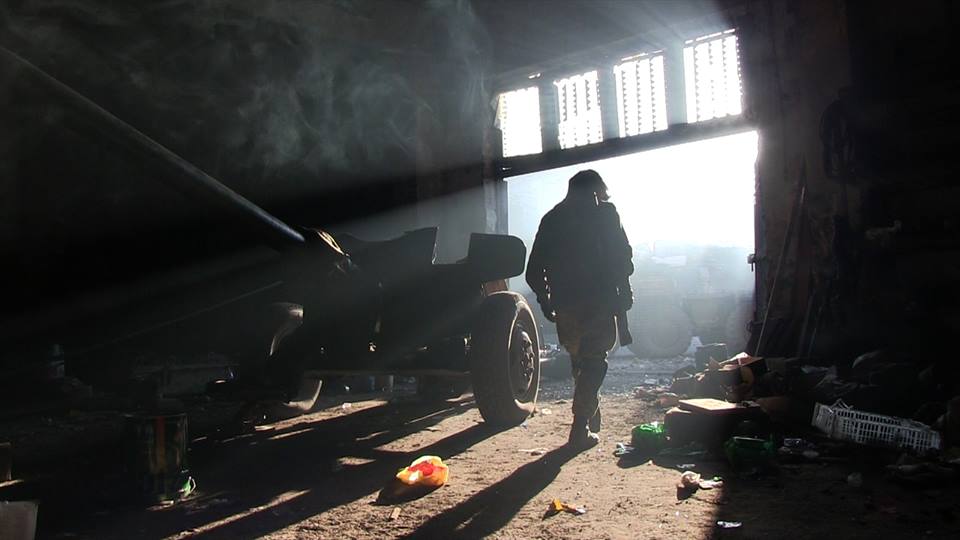
A brief history of the ongoing conflict in Ukraine, and the bravery of a twenty-six-year-old film student in her quest to document the Revolution from the front lines.
Ukraine, the second largest country in Europe, officially gained its independence after the dissolution of the Soviet Union in 1991. The young nation has since been caught in the middle of a tumultuous tug-of-war battle between Russia and Europe—each side vying for economic and political influence.
Following Vladimir Putin’s rise to office in 2000, Russia began to intensify its grip on Ukrainian politics by supporting pro-Russian sympathizer, Viktor Yanukovych, in an extremely controversial Presidential election. As a result, thousands of outraged Ukrainian citizens took to the streets in a massive non-violent protest known as the “Orange Revolution” of 2004. Public outcry successfully reversed the outcome of the rigged election, yet the precedent-setting victory failed to bring about sustainable reform in Ukraine.
In the wake of the major Ukrainian economic crisis of 2008-2009, Yanukovych eventually won a legitimate Presidential election in 2010 by promising voters a stable and prosperous future. Within months of assuming office, President Yanukovych began implementing measures to resist European integration in favor of strengthening ties with the Russian Federation. Tensions escalated in 2014 when Yanukovych refused to sign an association agreement that had been in the works with the European Union for many months. This decision, combined with growing resentment towards widespread governmental corruption and rampant human rights abuses, culminated in the Ukrainian Revolution.
Turmoil and violent civil unrest erupted as the Revolution progressed, resulting in the death of hundreds of protesters, policemen, and innocent bystanders. Kremlin-backed propaganda further intensified rising violence and bloodshed throughout Ukraine, as local men in the predominately Russian-speaking east formed armed militias, and began seizing Ukrainian government buildings.
In the midst of all the chaos a twenty-six-year-old film student from Kiev, Alisa Kovalenko, decided to take action the best way she knew how; through a film lens. She proceeded to capture mounting tensions throughout Ukraine, including the pro-Russian rallies and dangerous protests in the capital city of Kiev. In a noble effort to combat Russian propaganda portraying Ukrainian nationalists as “villainous terrorists”, Kovalenko joined a group of Ukrainian soldiers on the front lines of war. Camera in hand, she endured a myriad of perilous encounters with separatist snipers, mortar shell explosions, and machine gun fire. At one point, she was even captured and aggressively interrogated by pro-Russian forces for spying.
Kovalenko, along with director Liubov Durakova, eventually compiled all of the footage she had captured over the course of the Revolution, and transformed it into a unique and sobering documentary entitled “Alisa in Warland”.
Alisa in Warland is a phenomenal account of the Ukrainian conflict as it humanizes the war through scenes of comradery and day-to-day life depictions of the ordinary men who are risking their lives on the front lines to defend their country and preserve its unity. Footage of the soldiers decorating abandoned homes with makeshift garlands on Christmas, as well as scenes of the soldiers playing cards and talking about their hometowns, forces viewers to perceive the men beyond the uniform that they wear—as individuals. When Alisa asks the men why they willingly joined the front lines of conflict, their answers all reflected their deeply rooted concern for the welfare of Ukrainian citizens and future of their nation. In this regard, the film successfully disavows the ubiquitous Russian sentiment that all Ukrainian soldiers are “villainous terrorists.”
After viewing a screening of Alisa in Warland at the third-annual WARM Festival in Sarajevo, Bosnia and Herzegovina, Anna B. Roach, a student at the University of Toronto, praised the film for providing a female-centered perspective of war. “I particularly enjoyed watching the positive interaction between Alisa and the male soldiers, and how they never put her down because of her gender. On the contrary, they respected her and the work she was doing,” Anna remarked.
Another insightful observation made by Ayla Heder, a graduate student at Des Moines University, revolved around Alisa’s relationship with her French boyfriend. “When a man decides to risk his life fighting for a cause, he is usually considered a brave hero and his wife or girlfriend must come to terms with that decision. It was upsetting to see that when a woman, in this case Alisa, decides that she wants to fight for a cause, her boyfriend continually berates her for her decision and claims that her decision is jeopardizing their relationship, ultimately threatening to break up with her if she doesn’t return home. It’s a double-standard that exists far too often in times of war and conflict.”
While Alisa in Warland only shows the Ukrainian nationalist perspective, the film serves as an active reminder that conflicts are always complex and multifaceted in nature. It will forever preserve the memory, tears and heartbreak of a divided Ukraine, and it left viewers with a sense that the tug-of-war rope, however strained, will continue to endure.
—
“Alisa in Warland” had its Balkan premiere during the 3rd annual War Art Reporting and Memory (WARM) Festival. The WARM Festival took place in Sarajevo from Sunday 26 June to Saturday 2 July 2016. Organized by the WARM Foundation in collaboration with the Post-Conflict Research Center (PCRC), the Festival brings together artists, reporters, academics and activists around the topic of contemporary conflict.






